By Alexander Zakrzewski
As Alexander the Great marched his army south along the Levantine coast in January 332 bc, he must have felt as if the fates were unquestionably on his side. Two years earlier, he had led his army across the Hellespont to do the unthinkable and challenge the might of Persian King Darius, whose massive empire stretched from the Balkans all the way to the Indian frontier. Despite their great numbers, the Persian forces were quickly overwhelmed by the brilliant 24-year-old king of Macedon and the bristling spear points of his superbly trained phalanx.
After twice defeating Darius’s army in battle, the territories of Anatolia had fallen before him in rapid succession. This time, though, the phalanx faced an obstacle that made even the most seasoned of Alexander’s commanders shudder with dread. The island city of Tyre, fortified by high walls and crashing waves, had dared to offend the Macedonian king, who naturally demanded restitution in blood. To soothe their king’s stinging pride and punish the Tyrians for their arrogance, the Macedonian army would change not only the course of history but also the face of the earth as well.
In the decades that followed the devastation of the Peloponnesian Wars, a new and unforeseen power arose to the north of Greece in the hilly wilds of Macedonia. Through a combination of shrewd diplomacy and military cunning, Macedonian King Philip II had transformed his country from a semi-barbarous backwater into the leading regional power. Boorish, hard-drinking, and blind in one eye from an enemy arrow, Philip was derided by his haughty southern neighbors as the “Barbarian King.” However, his uncouth ways belied a sharp tactical and strategic mind that bordered on military genius. By craftily exploiting his sprawling kingdom’s abundance in mineral wealth and natural resources, he built the Macedonian army into a powerful force that was unrivaled in skill and efficiency. The Greek city states, chronically divided by their mutual animosities, soon proved no match for the Macedon king, who by 337 bc, had forced them into a Macedonian-led League of Corinth. The league not only established Philip’s hegemony over the Peloponnese, but also furnished the support he needed for his long-held dream of invading the Persian Empire.
Unfortunately for Philip, before he could fulfil his life’s ambition he was stabbed to death at a public ceremony by one of his bodyguards. When the assassin was immediately struck down before he could be interrogated, rumors began to swirl that the murder had been orchestrated by Philip’s wife, Olympias, and their 20-year-old son Alexander. Although nothing was ever proven, it was widely known that relations between father and son had soured considerably. Their relations were worsened irreparably when the birth of another prince, this time to a full-blooded Macedonian mother (Olympias was a princess of Epirus), threatened Alexander’s succession to the throne. Philip’s sudden murder by an unlikely assailant had, therefore, conveniently removed the one obstacle standing between Alexander and mastery of the Hellenic world.
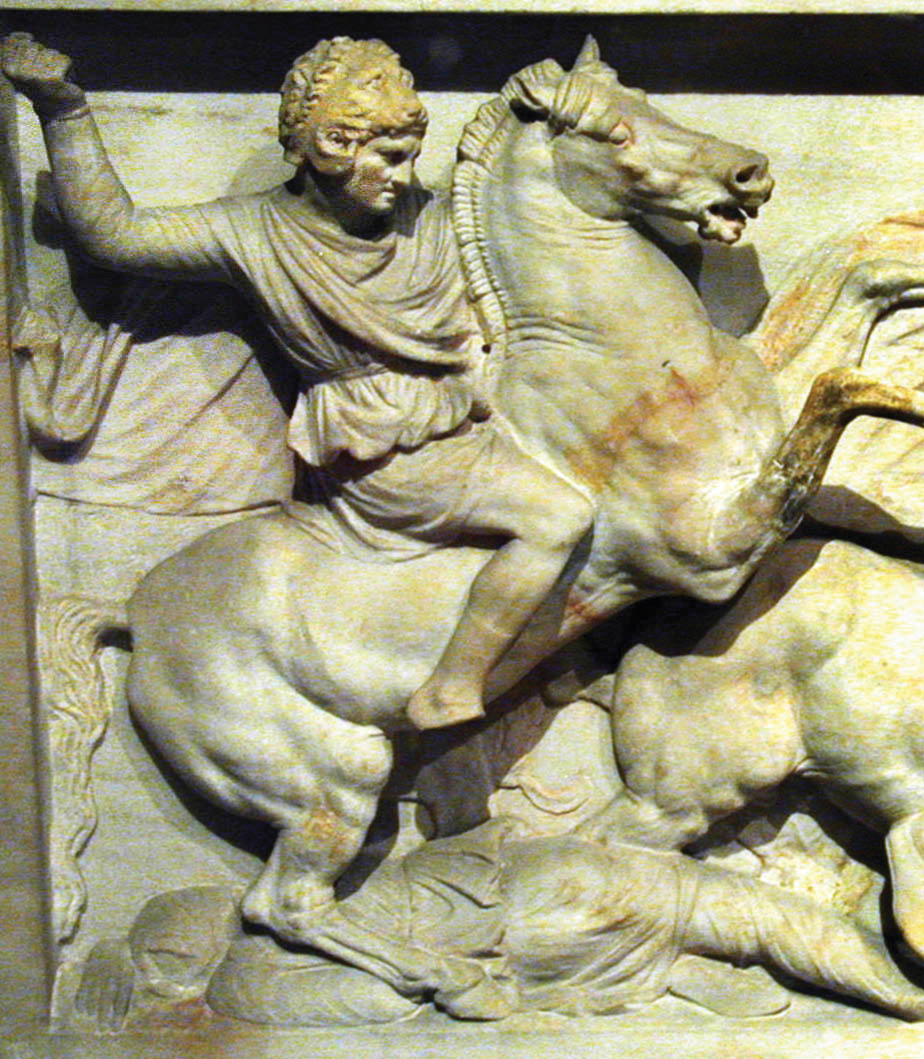
While sources differ wildly as to the Macedon prince’s size and appearance, those closest to him describe him as having been blond with a ruddy complexion. Though he was of below average height, he possessed a strong neck and muscular upper body and was so fleet of foot that many encouraged him to enter the Olympic Games. His most striking physical feature was his piercing, different colored eyes, which were deep set in his face. Along with a square jaw and chiselled cheekbones, they gave him a fierce look of determination that made up for his unimposing height. Everyone he met was struck by his unbridled sense of ambition, which surpassed even that of his formidable father. This was the product of the two great influences in Alexander’s life—his tutor Aristotle and his doting mother. Aristotle instilled in the young prince the superiority of Hellenic civilization. The mysticism-obsessed Olympias believed her son to have been divinely conceived by Zeus himself through a series of intense dreams and visions she experienced while pregnant. It is hence no surprise that the young Alexander, born of a God into humanity’s most enlightened culture, grew up believing himself destined to conquer the world.
Though he loathed admitting it, Alexander’s military genius was unquestionably a product of the innovations and influence of his brilliant father. While the Greeks and Persians relied heavily on conscripts and mercenaries to shore up their ranks, Philip’s army was composed of highly trained professional soldiers, of which the most famous units were the legendary phalanx. These well-drilled infantrymen advanced in dense formations 16 rows deep with each man carrying a long spear called a sarissas. This unique weapon, which may have been as long as 24 feet, allowed the first five ranks to engage the enemy simultaneously and gave the entire formation the intimidating appearance of a porcupine or moving forest. The phalanx was supported in battle by the elite Companion cavalry, armored horsemen recruited from among the Macedonian nobility and trained as a shock force for precision strikes against an enemy’s vulnerabilities. At the Battle of Chaeronea in 338 bc, an 18-year-old Alexander led his father’s Companions through a gap in the Athenian lines where they surrounded and annihilated to a man the crack Theban infantry regiment known as the Sacred Band. It was experiences like Chaeronea that imparted in the young prince the effectiveness of using stalwart infantry and mobile cavalry to manipulate an enemy into exposing a weakness, a tactic that would be the key to many of his future victories.
Alexander began his reign by purging his enemies at court, pacifying the barbarian tribes that plagued Macedonia’s northern frontier, and burning a rebellious Thebes to the ground. Having firmly established his authority over the Hellenic world, he set upon a quest that would dwarf the achievements of his famous father and cement his place as history’s greatest military genius. In the spring of 334 bc, Alexander launched his invasion of Persia with a force of 43,000 infantry and 6,000 cavalry. As is often the case with brilliant commanders, timing was on his side. The Achaemenid Persian Empire, while indeed vast and rich, was in a gradual state of decline, largely brought on by instability at the top. Its king, Darius III, had not inherited the throne but rather claimed it as the last survivor of a bloody series of court murders and intrigues. Because the empire was a heavily centralized state in which the king’s power was absolute, years without a stable claimant had allowed the provincial governors, known as satraps, prone to corruption and petty jealousy, to govern as they pleased without interference from the capital.
As Alexander marched deeper and deeper into Persian territory, a high-ranking Greek mercenary in Persian service, Memnon, urged the local satraps to burn their crops and villages so as to deprive the overstretched Alexander of supplies. Unwilling to see their lucrative personal fiefdoms destroyed, and eager not to draw the meddling attention of the royal court, the satraps chose instead to confront the Macedonian army on the muddy banks of the Granicus River. Despite favorable terrain, superiority in cavalry and the presence of thousands of highly trained Greek mercenaries (all of whom were slaughtered or enslaved after the battle), the Persians were outmatched and outmaneuvered by Alexander’s close coordination of phalanx infantry and Companion cavalry. The audacious victory was the Persians’ first taste of Alexander’s brilliance, and it left all of Asia Minor ripe for the Macedonian army’s picking.
Many of the Greek cities along the Ionian coast, having long chafed under Persian suzerainty, willingly threw open their doors to Alexander and welcomed his men as liberators. Two exceptions were Miletus and the heavily fortified and well-supplied city of Halicarnassus, home of Mausolus’s great mausoleum. The latter in particular provided Alexander’s army with its first major experience of siege warfare. During his numerous campaigns, Philip had made several important innovations for the reduction of cities and fortresses that Alexander and his chief engineer, Diades, further improved upon. Philip introduced a host of lightweight rock- and javelin-throwing catapults and ballistae into his siege train; they were used to both clear enemy parapets and as a prototypical field artillery. Indeed, Alexander’s Balkan campaign before the Persian invasion was among the first instances in military history in which these machines were effectively used to break up enemy formations and cover river crossings.
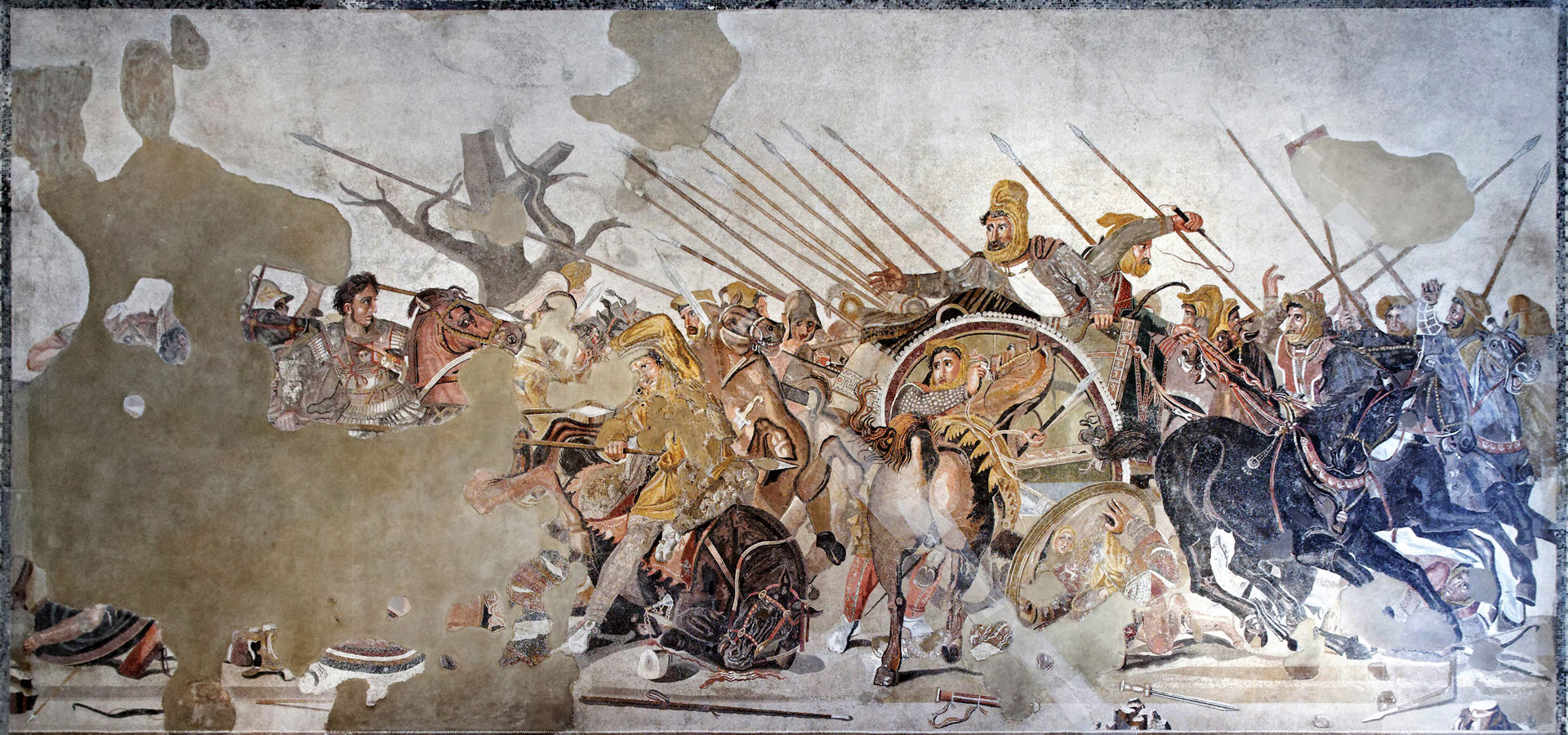
The Macedonian corps of engineers also had devised an extremely efficient method for constructing and transporting large siege engines, such as towers and battering rams. Only the most essential and more complicated components of the engine were manufactured ahead of time and included in the siege train. The larger, bulkier items were instead hewn on the spot. At Halicarnassus, Alexander learned the importance of a strong naval presence (something he sorely lacked) when reducing coastal cities. This became glaringly apparent when the majority of the garrison managed to escape the Macedonian army with the help of the Persian fleet.
From there Alexander turned his army north into the Phrygian plain, where he took Gordium, city of Midas and home to the legendary Gordian knot, which he solved with one hack of his sword. It was said that whoever could undo the knot would become master of Asia. Hence, when that night a thunderstorm split the heavens, Alexander’s seers duly interpreted it as a sign of Zeus’s approval and a confirmation of his destiny. Buoyed by this turn of events, he turned his army south once again to begin the long march across the arid Eastern Anatolian plain, through the Taurus Mountains, and into modern-day Syria to seek out the decisive confrontation that would consolidate his conquests.
By that time, Darius had realized that the Macedonian interloper was a serious threat. The Persian king had been working feverishly for months from his palace in Babylon to assemble an army to quash the invasion once and for all. While estimates vary greatly, Darius’s force probably numbered approximately 100,000, an indication of both the vast reserves of the far-flung Persian Empire and the seriousness with which the king was now taking the situation. At the town of Issus, near the Bay of Alexandretta, Darius foolishly forced Alexander to fight in a narrow coastal plain where he could not exploit the full weight of his numerical superiority. Although outnumbered three to one, the inferior Persian infantry once again found itself pinned against the spears of the phalanx while Alexander led his Companions in a devastating cavalry charge through the enemy’s left flank and straight at Darius himself. In a scene forever immortalized in the famous “Alexander Mosaic,” the Persian Household Cavalry fought desperately in defense of their king only to be hacked down in droves in front of his richly ornamented chariot. Realizing that all was lost, Darius threw off his royal garments and fled the field on a swift steed, leaving behind him not only his army but his wife, mother, two daughters, and a large cache of treasure. In the ensuing slaughter, an estimated 50,000 to 70,000 Persians are said have been either killed or captured, a catastrophic loss that opened the way to the heartland of the Persian Empire.
Although he bitterly resented having come so close to Darius only to watch him slip away, Alexander resisted the urge to pursue him into Mesopotamia and instead chose to continue southward along the Fertile Crescent’s rich Mediterranean coastline. The Persians still enjoyed naval supremacy, and Alexander reasoned quite correctly that if he could deprive them of their crucial naval bases, their powerful fleet would be rendered useless. Since the time of Cyrus the Great, the major producers of ships for the Persian navy were the Phoenician cities of Sidon, Arwad, Byblos, and Tyre—and with good reason. The Phoenicians were among the great seafaring peoples of the ancient world. Known as the “Traders of Purple” because of their monopoly on the valuable dye that they expertly extracted from the murex shellfish, the Phoenicians had built a mercantile empire that stretched as far as the Atlantic coast. Among their great innovations were bireme galleys and a writing system on which all phonetic alphabets since are based. The foremost of their great cities was Tyre, which is celebrated in the Old Testament for both its wealth and for having provided King Solomon with the timber and artisans to build the Temple of Jerusalem.
For centuries, the Phoenicians were happy to provide the Persians with ships and crews (including at the Battle of Salamis) in exchange for a quasi-independence that allowed them to retain their prosperous trading network. However, in recent years, relations between ruler and vassals had soured to such an extent that only 12 years before Alexander’s arrival, the city of Sidon had formed an alliance with Egypt and rebelled against Persian rule. The Persians brutal repression of the revolt was still fresh in the minds of the Sidonians, who were predictably more than happy to depose their puppet king and submit their city to Alexander. When Alexander reached the city of Tyre, his reception was far less welcoming.
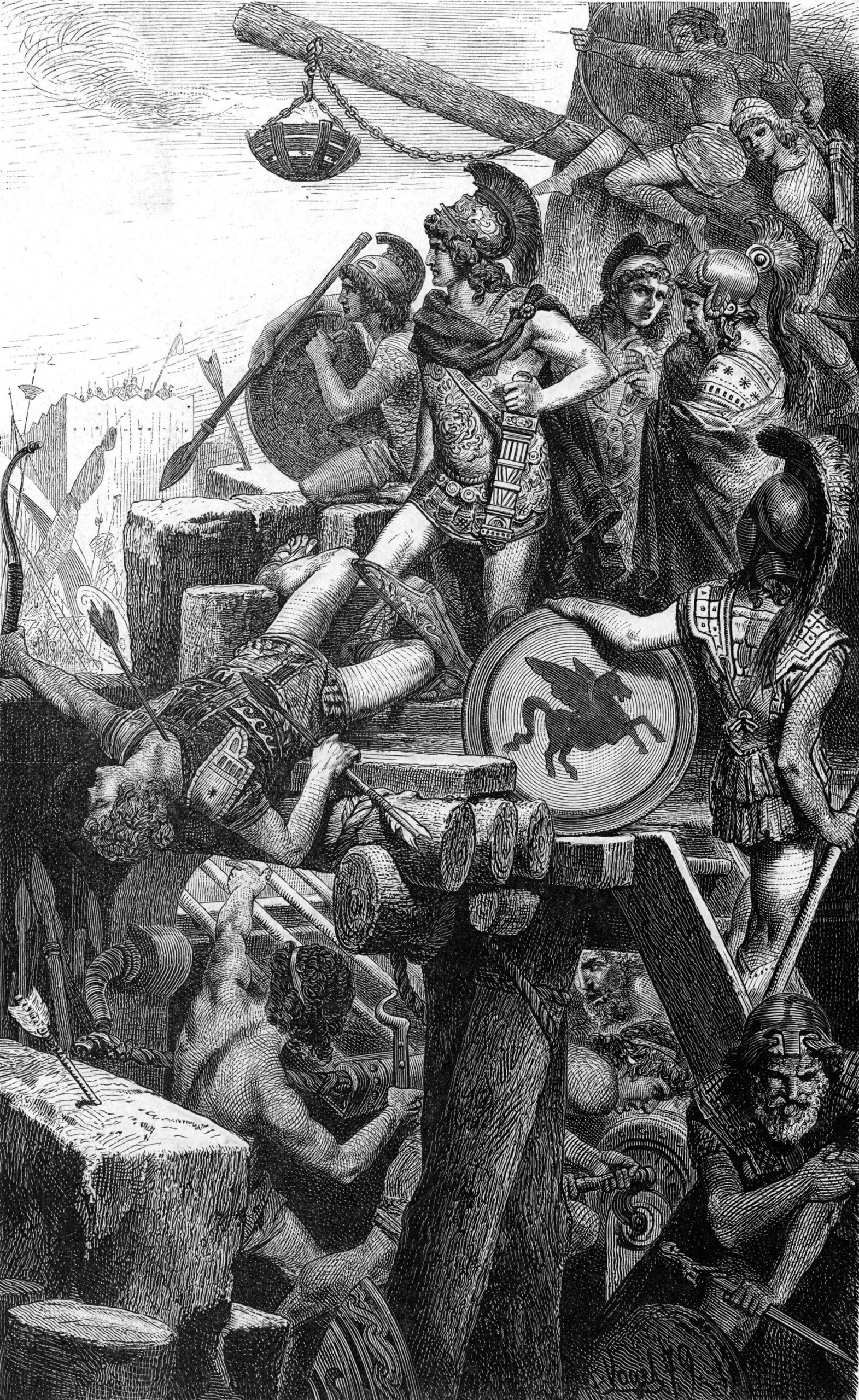
Tyre was the richest and most powerful of the Phoenician cities and, in recent years, it had benefitted greatly from not having joined its sister city in rebellion. In fact, at the time of Alexander’s arrival, Tyre’s king happened to be away serving with the Persian fleet in its raids against the Peloponnese. The Tyrian envoys, desiring neutrality above all things, greeted Alexander with the customary gifts and diplomatic niceties and even offered peaceful terms that would allow the Macedonian army to pass through their territory unmolested. Alexander thanked them kindly for their gifts then made a seemingly benign request. There were two sections to Tyre, an old and a new. Old Tyre was a coastal settlement on the Asian mainland that looked out on New Tyre, a walled island about half a mile offshore. It just so happened to be the annual festival of the Phoenician god Melkart, who was considered by the Greeks to be the rough equivalent of Hercules. Because his family claimed descent from Hercules, Alexander requested that he be allowed to sacrifice at his famous ancestor’s temple in New Tyre. The Tyrians, being of a merchant race well seasoned in tricky negotiations, immediately recognized that such a gesture, performed by a conquering king during a religious festival, would be tantamount to a formal submission of the city. Instead they informed Alexander that a perfectly suitable temple existed on the mainland and he was free to use it however he pleased.
At this irreverent refusal, Alexander’s explosive temper got the better of him and he flew into an uncontrollable rage. The envoys insisted that they were merely trying to maintain neutrality, but Alexander would not hear of it. So vitriolic was his anger that the shaken emissaries returned to their government with the recommendation that they at least consider letting the Macedon king worship where he desired. It was to no avail. Tyre had survived many sieges in its long history—including a 13-year effort by the Babylonian King Nebuchadnezzar—and they had every reason to believe that they would survive this one. So impregnable was the city considered to be that its name in Hebrew, “Tzu,” literally translated to “rock” or “fortress.”
Indeed, every aspect of the city’s defenses seemed to favor the besieged rather than the besiegers. The waters around the 53-hectare island were particularly rough due to the southwesterly winds that swept the Levantine coast, and the seabed, shallow at first, dropped sharply nearer the city to a depth of 20 feet. The Tyrians had spent their legendary wealth wisely in bolstering these natural defenses with a thick circuit of walls that, on the landward side, stood as high as 150 feet. To prevent an attacking force from landing on the island, the city’s architects had constructed the walls at the very edge of the water so that they appeared to rise straight out of the sea. The city possessed two harbors, one on the island’s northeast side facing Sidon and another in the south facing Egypt. It was through these two ports, which were dubbed the Sidonian and Egyptian ports, respectively, that food and water were imported and the wealth of the Mediterranean was funneled. So long as these two crucial outlets to the sea remained open, the city’s bustling population of 40,000 and its garrison of 8,000 defenders could survive and even continue to prosper.
Alexander and certainly his staff must have thought twice about the prospect of attacking such a position as he soon sent envoys to the island to once more attempt peace. This time it was the Tyrians who lost their composure, and they killed the heralds and tossed their bodies into the sea. This act of war greatly enraged Alexander’s men and silenced the doubters on his staff. However, it did not solve the puzzle of how best to assault the island fortress. Conveniently, that night Alexander had a dream in which he envisioned Hercules standing on the walls of Tyre. His seers naturally interpreted this to mean that the city would fall only after a task worthy of the god himself. Luckily, Alexander had just such a labor in mind.
If the Tyrians could not be brought to fight on land, then the Macedonian Army would bring the land to the city of Tyre. It was determined that a mole would be built across the narrow channel separating the city from the mainland, across which its walls could be assaulted in a classic frontal attack. In order to be able to strike the wall from as wide a front as possible with men, siege engines, and artillery, the mole was to be no less than 200 feet wide. Accounts state that initially his soldiers took up the work enthusiastically and in the shallows close to shore his engineers made excellent progress packing down piles of stones to make a foundation upon which timber beams were laid.
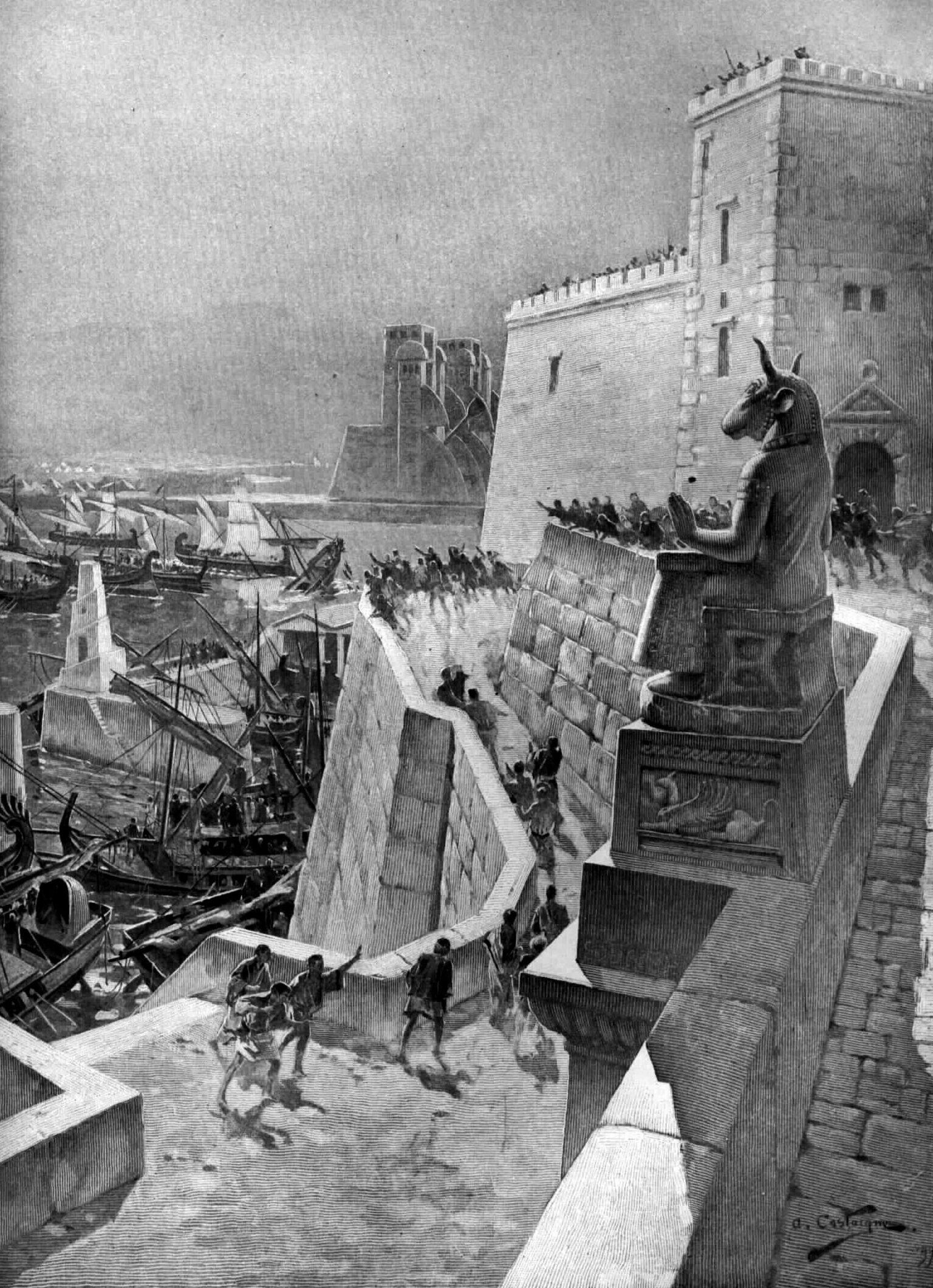
As Alexander’s men toiled in the hot sun, the Tyrian defenders, safe behind their battlements, jeered at them and the absurdity of their king’s plan. To secure building supplies and labor, Alexander ordered the buildings of Old Tyre torn down and its inhabitants forced into labor, an order that his irritated men no doubt relished. Alexander personally directed the construction progress from the shore and organized foraging detachments to venture into the hinterland and find further sources of wood and grain.
As the mole began to creep precariously closer to their city, the Tyrians abruptly changed their mocking tone and started to show the tenacity that had helped them to withstand innumerable past invaders. Nearer the city, the ocean floor dropped sharply, bringing the rapid process to a screeching halt. Alexander’s exhausted soldiers and workers were forced to toil for days to gain the same amount of ground they could initially achieve in hours. They now also found themselves within range of the city’s defenders, who showered them mercilessly with arrows and other projectiles. Worse yet, the resourceful Tyrians, encouraged by the promise of relief from distant Carthage, took to the offensive. Being seasoned sailors, intimately familiar with the local waters, they packed some of their swiftest sailing vessels with archers and slingers and cruised up and down the sides of the mole to harry the Macedonians from all directions.
To combat these threats, Alexander constructed two massive siege towers, taller than the city walls, mounted with catapults and ballistae. He placed these on the outer corners of the mole so that they could cover the work below. He also ordered rawhide screens erected along the edges of the causeway to further hide his men from the swarms of enemy assailants.
Undaunted, the Tyrians seized upon a timeless and terrifying tactic common to many of history’s great naval encounters. They filled an old horse transport with dry wood, pitch, and sulphur and strung cauldrons of oil from the mast. They also weighed it down so that its bow rose straight out of the water. When the wind was right, two triremes towed the vessel out to sea and made straight for the front of the mole. Once they had picked up sufficient speed, the skeleton crew on board cut the towing lines, set fire to the combustibles, and dove overboard. The ship instantly burst into an unstoppable ball of flames. The vessel’s raised bow allowed it to hop the edge of the causeway and sent it crashing straight into one of the towers. The collision cut loose the cauldrons of oil, which cascaded to the ground like a river of fire, engulfing everything in its path. As the men on the mole struggled to avoid the flames, a raiding party snuck up through the smoke to cut down as many Macedonians as possible and destroy whatever equipment had not caught fire.
The entire engagement unfolded so fast that, before reinforcements could arrive, the Tyrians had returned to their ships and triumphantly sailed for home, leaving Alexander’s hard-built mole a mass of burning carnage. To make matters worse, a few days after the Tyrian attack, a sudden storm churned up a heavy swell that in a matter of hours undid much of the work his men had produced in months.
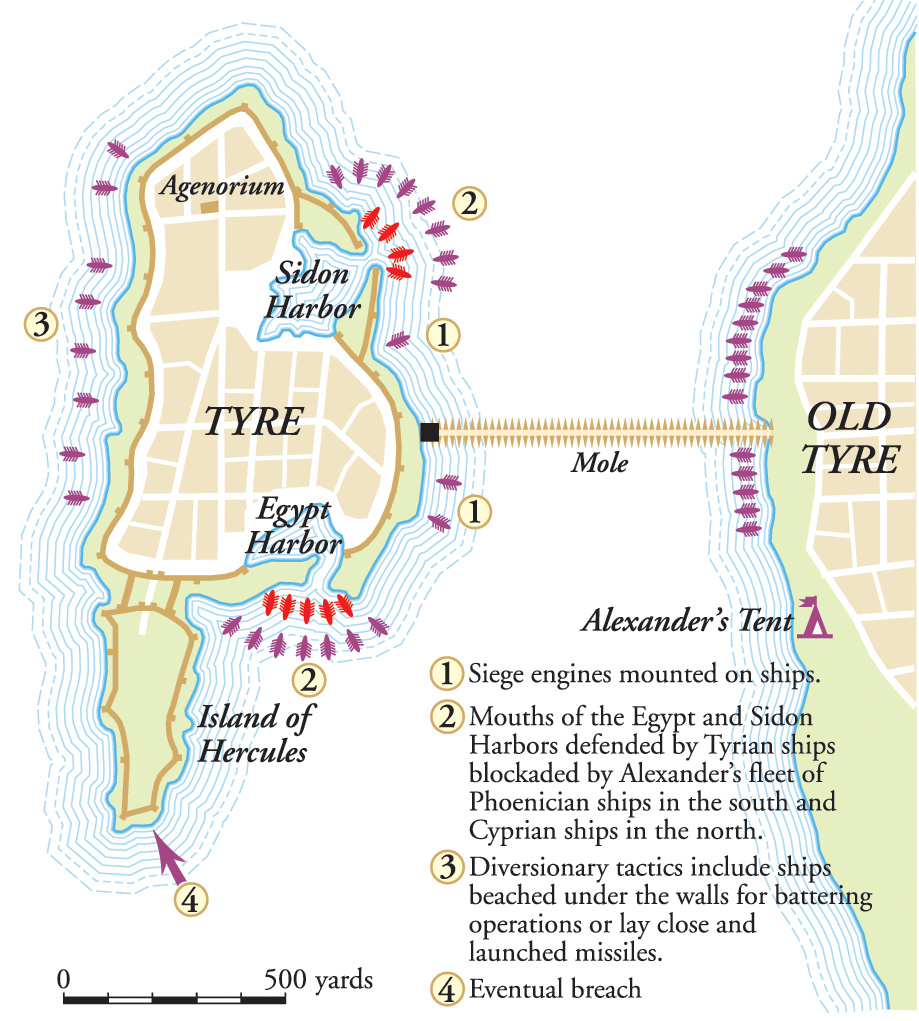
As Alexander watched powerlessly from the shore, he realized that it was impossible to take the city without naval support. Luckily for him, when word reached the Persian fleet of Alexander’s conquests, many of the foreign squadrons began deserting en masse. When the kings of Byblos and Arwad learned of their cities’ liberation from Darius, they immediately ordered their crews to raise their sails and make for Sidon, where Alexander was amassing as much naval support as he could garner. The Phoenician deserters were soon joined by contingents from Cyprus and Rhodes. Following the fireship and storm debacles, Alexander had given orders for the towers to be rebuilt and the mole widened even further before leaving to lead a brief punitive expedition into the Syrian hinterland to crush the Arab tribes that had been harrying his supply columns. So great was the rate of desertion among the Persian fleet that by the time he returned, he had more than 100 hundred warships from cities all across the Mediterranean waiting at anchor for him at Sidon.
Wasting no time, Alexander gave orders for the fleet to sail south in battle formation in the hopes of crushing the Tyrian navy once and for all. The Tyrians, who appear to have enjoyed a network of informants in the region, had caught wind of Alexander’s naval force and immediately sailed north to confront it. They were just as eager for a decisive confrontation that would end the siege. However, when the Tyrian admiral saw the size of Alexander’s fleet, which flew the flags of many of the great seafaring cities of the eastern Mediterranean, he promptly turned around and made for the safety of Tyre’s northern Sidonian harbor. There he ordered the ships in both harbors to moor themselves bow to stern across the harbor mouths to form a protective wall, manned by marines, which Alexander’s ships could not break without great loss. It was a Pyrrhic victory. Though the Tyrians had managed to save their fleet, it was now hopelessly blockaded and their crucial lifeline to the Mediterranean had been lost for good. Without sinking a ship, Alexander had achieved mastery of the seas.
With the city now surrounded on all sides and his mole reaching completion, Alexander unleashed the full fury of his siege arsenal. From the edge of the mole, heavy stone-throwing ballistae pounded the landward-facing wall. Above them, crammed into the newly built siege towers, archers and javelin-launching catapults picked off any defender who dared raise his head. At sea, Alexander’s sailors and engineers devised a slew of ingenious methods for using their ships as siege weaponry. Some of the stronger vessels were chained together in pairs with wooden platforms extended across the space in between. On these platforms were mounted battering rams made from enormous wooden beams reinforced with iron heads. As these rams smashed away at the foundation of the city walls, a swarm of ship-mounted artillery pulverized the enemy parapets. Another weapon that may have been employed at Tyre was the “crow.” Invented by Diades, Alexander’s chief engineer, this weapon was in effect a large hook swung from a vertical frame that was used to pull apart the upper stones of a wall and even drag enemy defenders from their posts.
To their immense credit, the Tyrians refused to be intimidated by these violent contraptions. They continued to fight tooth and nail and forced the attackers to pay dearly for every stone removed from their walls. Before the arrival of Alexander’s fleet, many of the city’s women and children were shipped off to Carthage so that those who remained could die fighting without fear for their loved ones. All across the battlements hides were strung to deaden the blows of the battering rams, and repair crews raced about hurriedly filling any breaches with whatever materials were available. The Tyrians tossed large stone blocks, probably picked from the walls of their own homes, into the shallows at the base of the city walls to keep the rams at a distance and at night divers slipped into the sea to cut anchor cables and terrorize sleeping crews. Perhaps inspired by Diades’s crow, the besieged devised cranes of their own, which they used to drop massive beams affixed with metal hooks and barbs onto the enemy ships. From the deck of his Macedonian flagship, Alexander could only watch with growing frustration as his resourceful opponents successfully warded off each costly attack. When a sudden gale blew up rolling waves that snapped apart the battering rams and sank many crews, the Macedonians must have wondered whether Poseidon himself was against them.
Despite their resolve, the strain of siege was beginning to tell on the people of Tyre. After six long months of almost unimaginable toil, the mole had finally reached the city walls, fulfilling Alexander’s grandiose plan to join the city to the mainland. A frontal assault was now at last inevitable. The city had been blockaded for months with few supplies if any slipping through the Macedonian fleet. Worse yet, the Carthaginians, who for months had been promising relief, now suddenly reneged on their assurances. Morale dropped and tension in the city was at fever pitch. When one foolhardy man announced that he had a dream of the god Baal (the Phoenician incarnation of Zeus) abandoning the city, an angry crowd tried to stone him to death. As is often the case in such desperate times, superstition and religious fervor spread rapidly. To keep their god from abandoning them, statues of the deity throughout the city were tied down with golden cords. Others took their frustration out on the few enemy captives unlucky enough to fall into their grasp. Needless to say, these unfortunate individuals were dispatched with greater and greater cruelty as the suffering in the city increased.
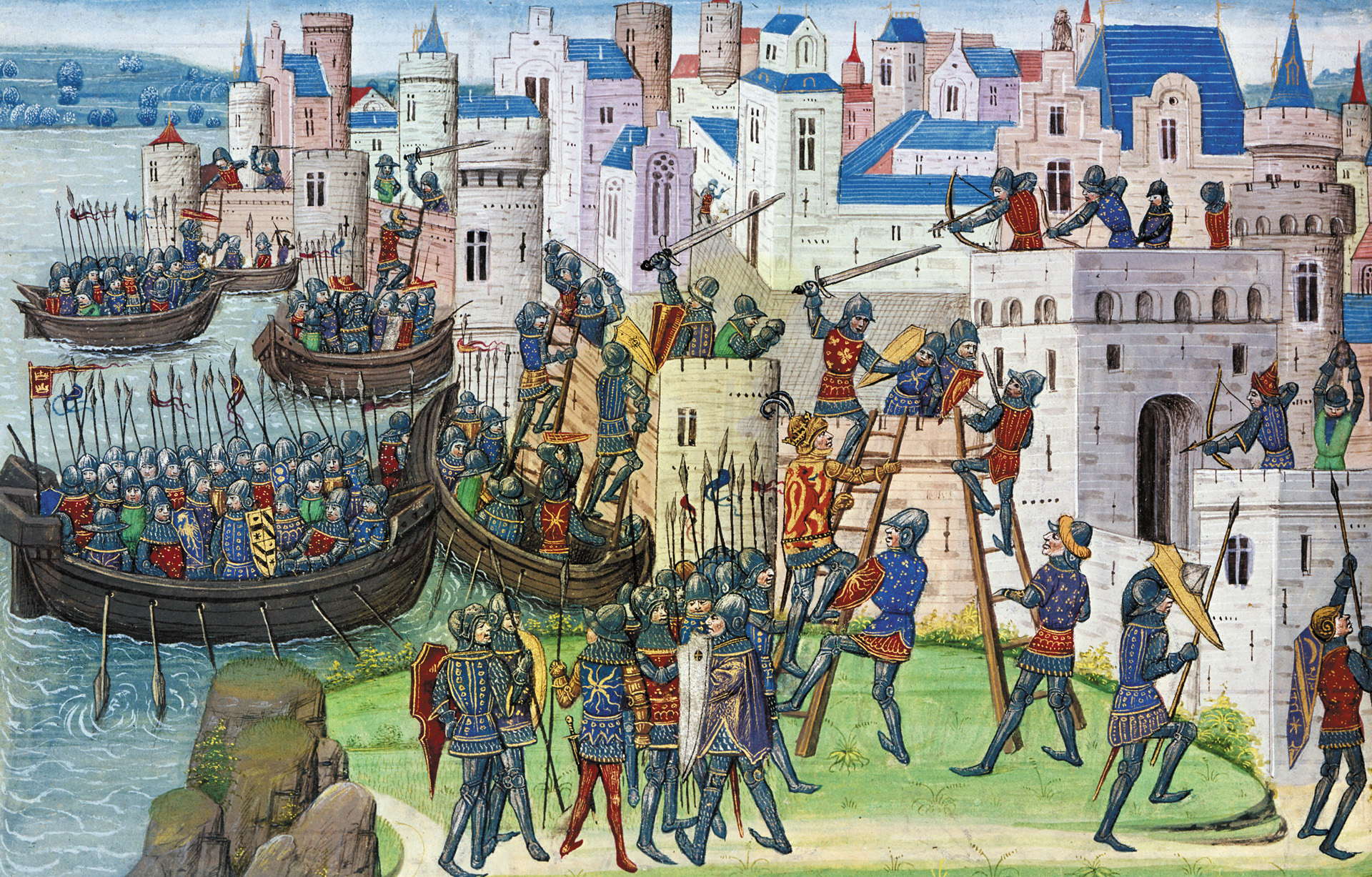
Still, the Tyrians fought on. Alexander’s first frontal assault on the landward wall was a disaster. The shields carried by the phalanx were relatively small and lightweight so as to allow greater control of the long sarissa. Rocks and projectiles dropped from a height of 150 feet would most certainly have crashed straight through, shattering bones and crushing bodies. The Tyrians were now also able to employ one of their most ingenious and horrific weapons. They filled great metal bowls with sand and heated the contents until it glowed white hot. The bowls were carried onto the ramparts and tipped on the tightly packed ranks of armored men jostling for space beneath the walls. One can only imagine the screams of agony among Alexander’s troops as the burning sand leaked in between their helmets and breastplates, searing their skin and burning out their eyes. Most would have simply dropped their weapons and jumped into the crashing waves in a desperate and probably fatal effort to relieve the blistering pain. As Alexander watched his men retreat from the mole amid shouts of victory and derision from the defenders above, he is said to have for the first time contemplated leaving a garrison in Old Tyre and abandoning the siege altogether.
The Tyrians were heartened enough by the successful repulse to risk an attack of their own. A raiding party of 13 ships, led by handpicked captains and crews, slipped out of the north harbor and attacked a group of Cypriot blockaders, sinking many and casting others to founder. The attack, though courageous, stood no chance of real success. Seeing his opportunity, Alexander immediately hopped on his flagship and personally led his fleet in a counterattack. Being badly outnumbered, most of the Tyrian raiders were quickly sunk with only a small group of badly damaged vessels managing to reach the safety of the harbor. Now once again enjoying the initiative, Alexander launched a furious all-out assault on all sides of the city. Though the attackers were still unable to penetrate the northern harbor, a small breach was made in the walls at the city’s southern end along a promontory nicknamed the “Island of Hercules.” As Alexander’s men poured into the hole, the exhausted defenders once again drove them back with a ferocious hail of arrows and projectiles. It was a meaningless victory. The wall had been breached and the soft underbelly of the city’s defenses had been exposed. The end result was now inevitable.
On July 28, after giving his men three days to rest and prepare for what both sides must have known would be the final decisive encounter of the siege, Alexander launched his assault. An assortment of siege craft pummeled the breach, reducing it to rubble while transports filled with men watched with anxious anticipation. At the same time, the attacking fleet made an assault on both the city’s harbors, putting an impossible strain on the defenders’ remaining resources. With the breach widened beyond repair, the order was given for the transports to lower their gangways. Spearheaded by the elite guards brigade, Alexander’s men poured into the breach where they were once again met with a storm of arrows and projectiles. When the defenders had exhausted their quivers, the fighting degenerated into a brutal hand-to-hand struggle in which Admetus, the leader of the assault, was run through with a spear. Seeing his men falter at this gruesome sight, Alexander, who was in one of the troopships, now personally led a followup assault. As his men stormed the enemy battlements, they could hear great shouts of joy coming from both harbors—the attacking ships had at last broken through. With their battlements in enemy hands and yet more attackers pouring into the city from both the north and the south, the Tyrians withdrew into the city center for one last stand.
In the seven months since Alexander had been rebuffed by the Tyrian emissaries, his men had endured all manner of toil and suffering from angry seas to burning sand. Having at last come to grips with their tormenters, the resulting carnage was predictably ferocious. Like maddened dogs, the Macedonians rampaged through the streets killing men, women, and children alike with remorseless enjoyment. The city’s rich houses, temples, and palaces, built by centuries of mercantile wealth, were systematically pillaged, desecrated, and razed. Those women who had bravely determined to remain by their husbands’ sides rather than leave for the safety of Carthage, were ingloriously raped and murdered, while their children, if not slaughtered outright, were herded off for sale into slavery. So great was the destruction that the Sidonians, disgusted by the wanton killing of their fellow Phoenicians, covertly smuggled as many as 15,000 (mostly noncombatants) away to safety. Amazingly, when the Tyrian king and a number of other nobles barricaded themselves in the temple of Melkart for a final martyr’s death, Alexander ordered that they be spared. The rest of the populace was not as lucky. Of the surviving garrison, 2,000 were crucified along the city’s battered walls. A further 30,000 surviving citizens were sold into slavery.
Following the storming of the city, Alexander strode into the temple of Melkart and made his long-delayed sacrifice to Hercules. Gymnastic games and a great torch race were held to honor the deity and celebrate the victory. A lavish funeral was also held for the Macedonian dead, which after seven long months of continual fighting must have been numerous. His pride soothed and Darius’s naval power permanently crippled, Alexander packed up his army and began the long march down the coastal road to Egypt and yet more glories. Over the centuries, the mole he built has been naturally expanded by coastal sediment and continues to connect the two sections of Tyre to this day. It is a lasting reminder of the scope of Alexander’s ingenuity and an affirmation of his famous quote: “There is nothing impossible to him who will try.”
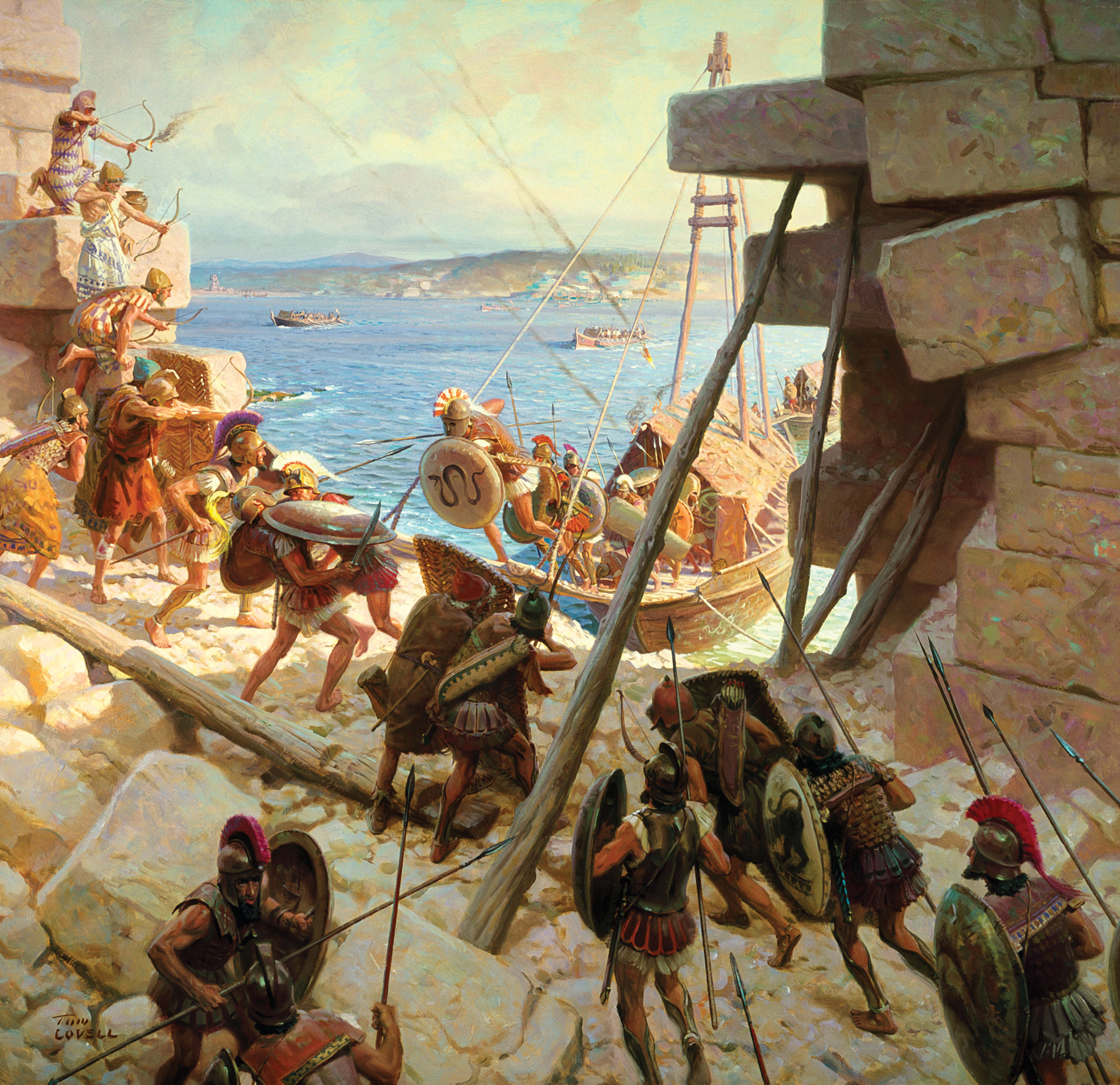
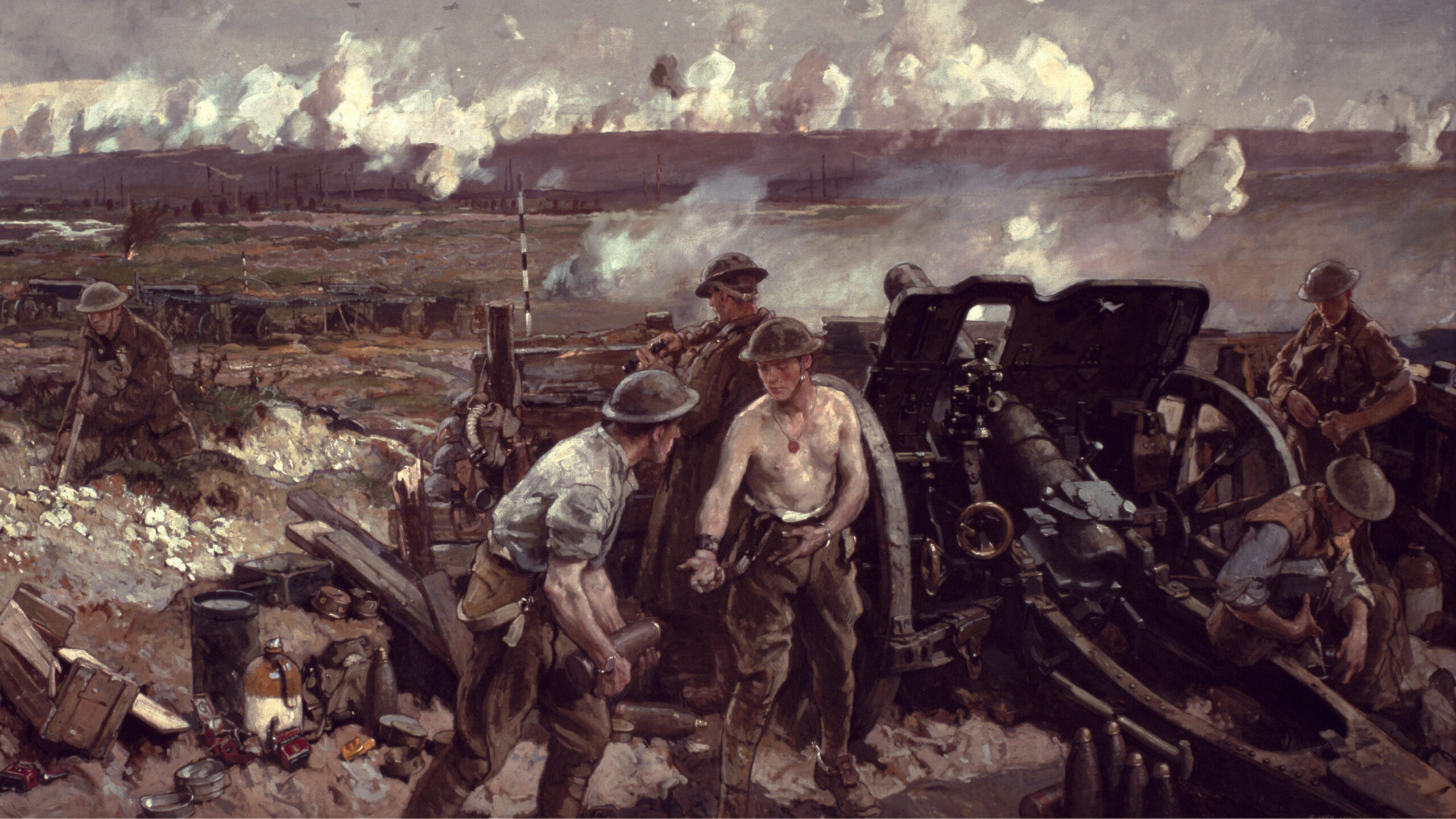
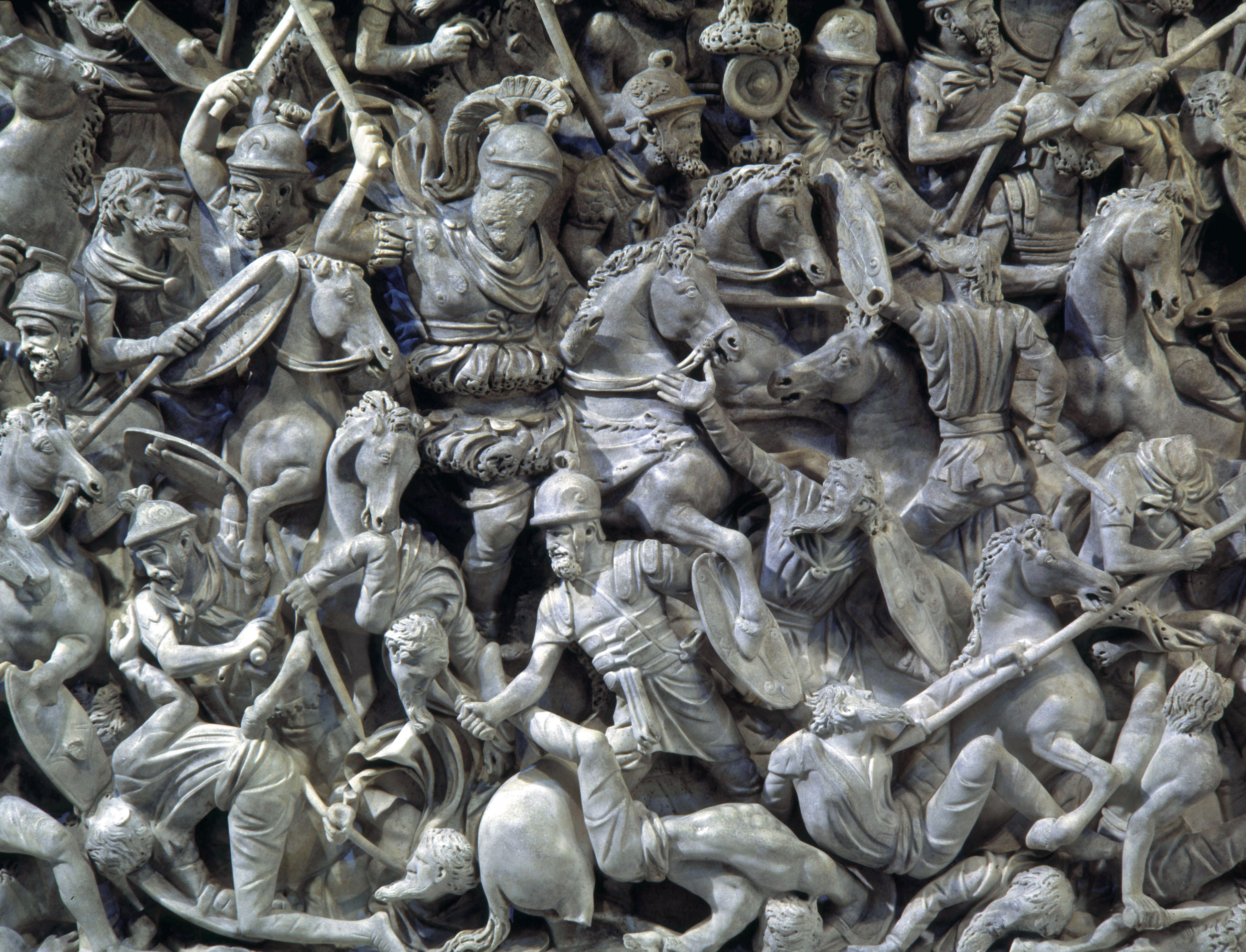
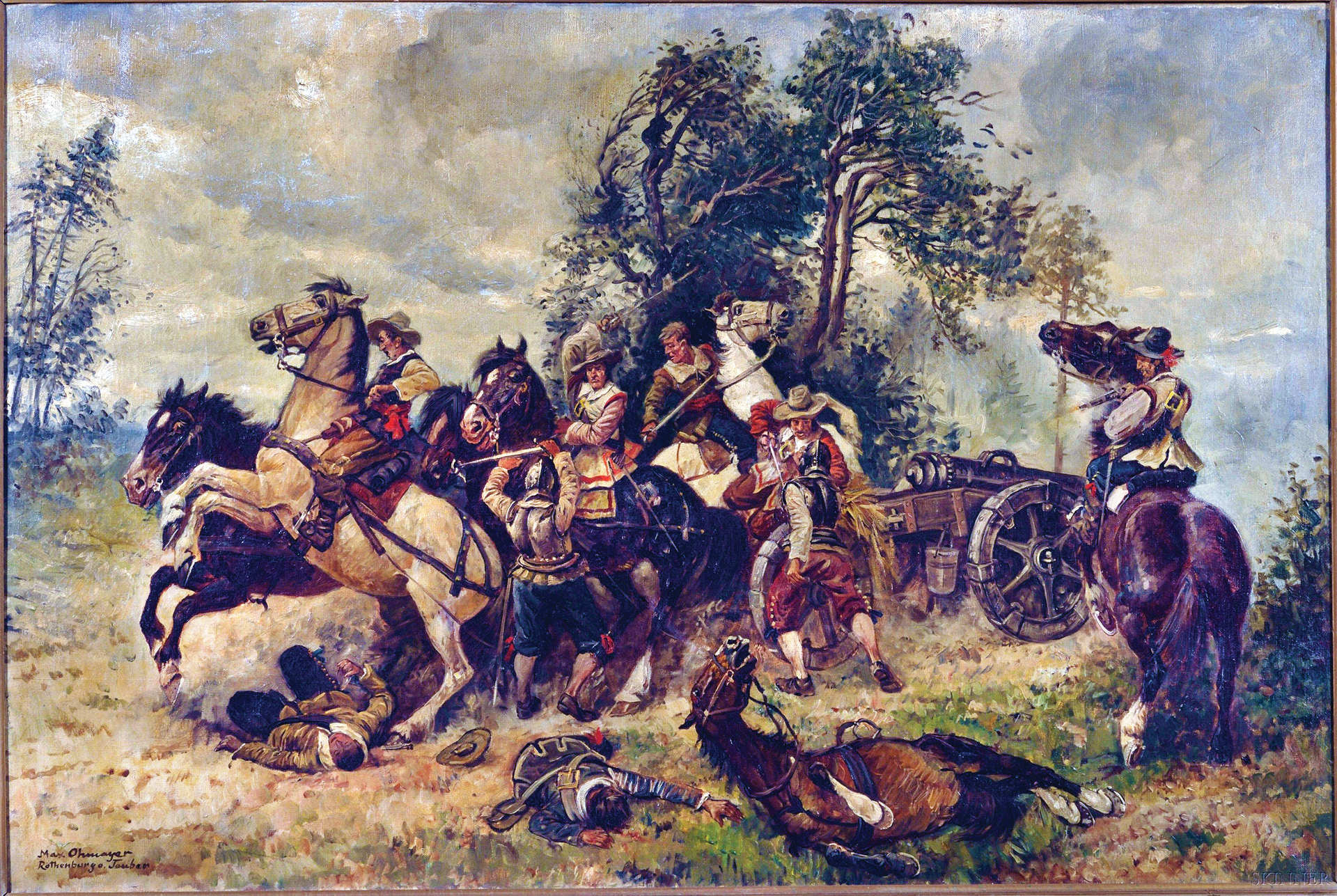
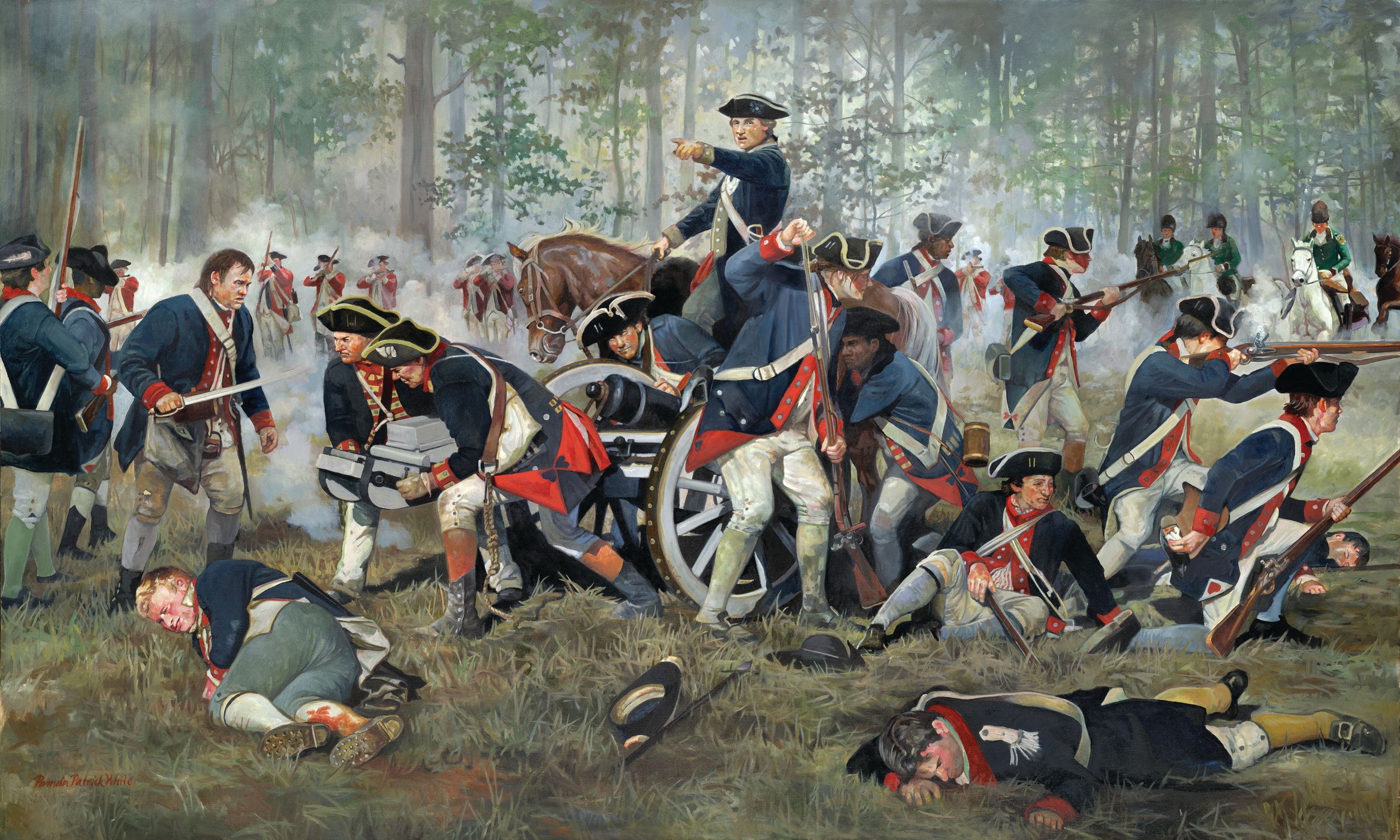
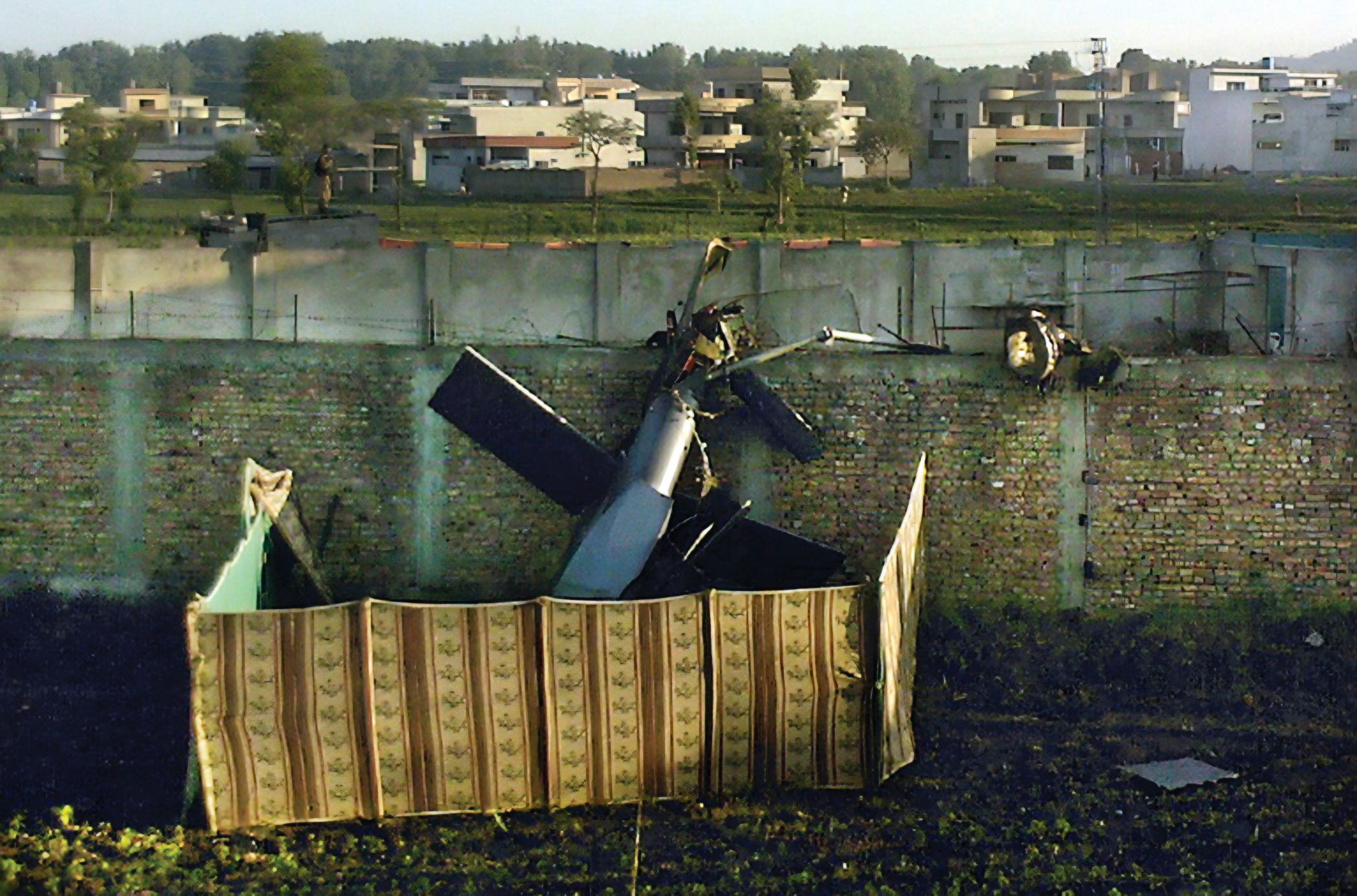
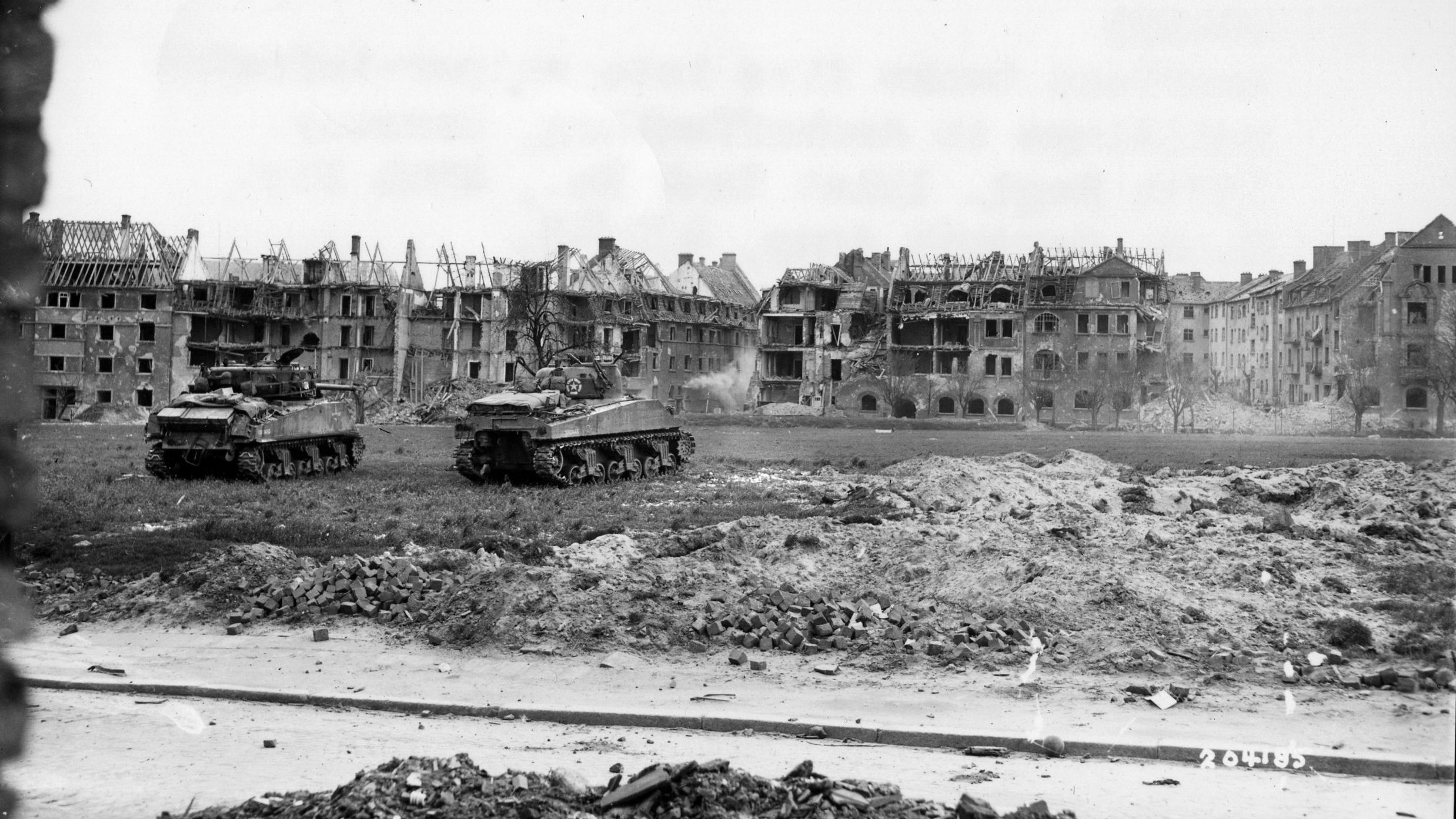
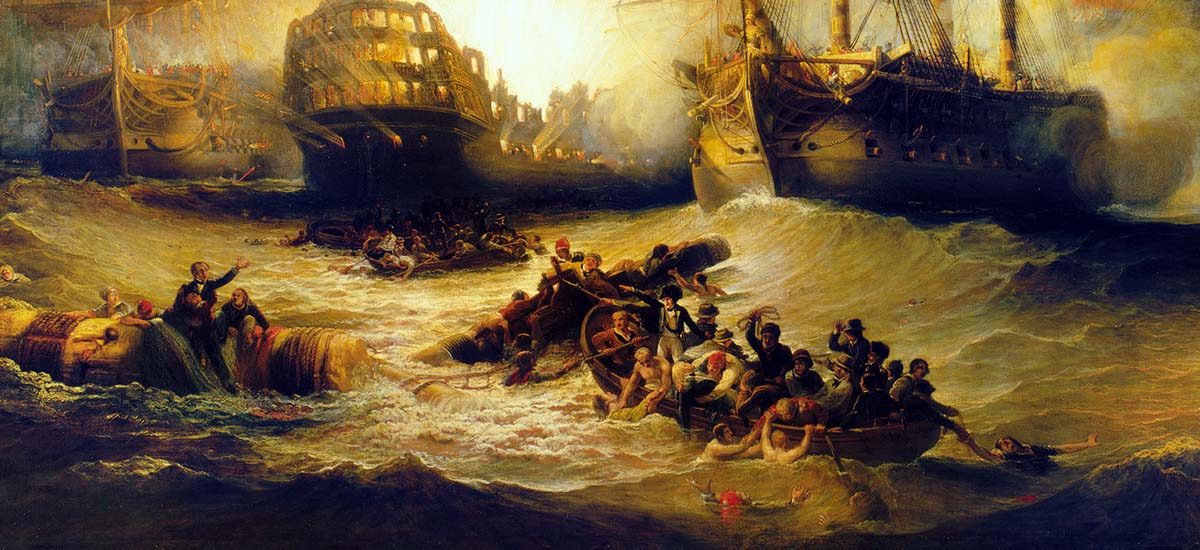
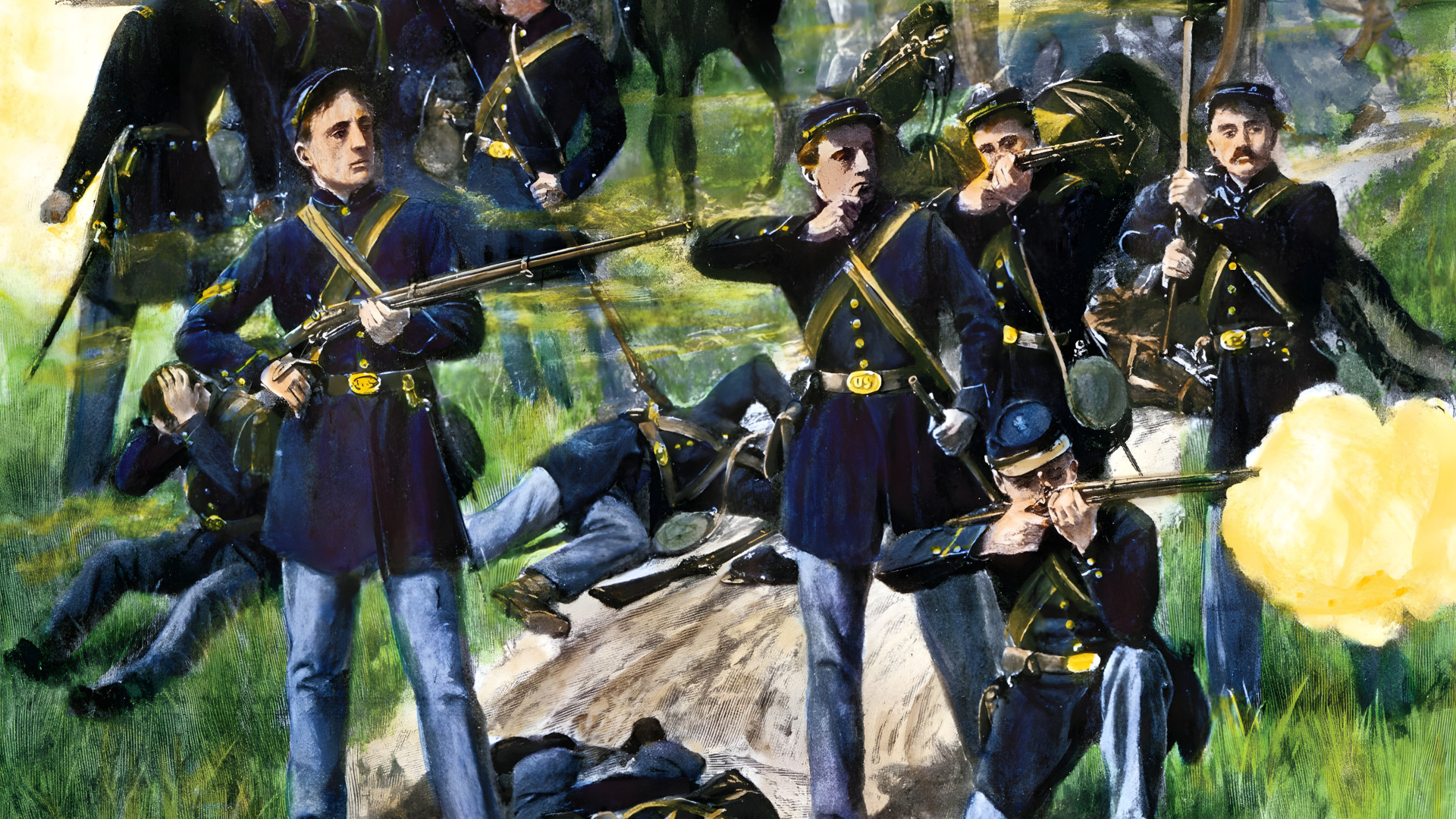
Join The Conversation
Comments
View All Comments